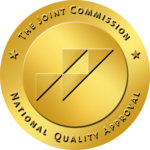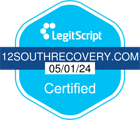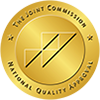Many people rely on programs such as Narcotics Anonymous (NA) and Alcoholics Anonymous (AA) to stop addiction. These well-known organizations have helped numerous individuals achieve long-term sobriety. Though they appear to be similar programs, each has its own strategies and focus. Knowing the differences may uncover which program fits a person best.

What is NA?
A Focus on Drug Addiction
Narcotics Anonymous (NA) is a fellowship that provides support to individuals recovering from drug addiction. Founded in 1953, NA was created to address the needs of those struggling with substance abuse outside of alcohol. Its guiding principle is abstinence from all drugs, including prescription medications and illicit substances.
Participants attend regular meetings to share their experiences and listen to others who understand their struggles. These meetings create a sense of community and accountability, which can be instrumental in maintaining sobriety.
The 12-Step Approach
NA uses a modified version of the 12-step program initially developed by Alcoholics Anonymous. These steps emphasize personal reflection, spiritual growth, and taking responsibility for one’s actions. Although the program encourages spiritual principles, it is inclusive and not affiliated with any religious organization. Members are encouraged to interpret the steps in a way that aligns with their personal beliefs.
Accessibility and Community
NA is a global organization that offers in-person and virtual meetings to accommodate people from all walks of life. The program is free of charge, making it accessible to anyone seeking help. The inclusive language used in NA literature ensures that participants from diverse backgrounds feel welcome and supported.
What is AA?
Addressing Alcohol Addiction
Alcoholics Anonymous (AA) was established in 1935 to help individuals overcome alcohol dependency. It is the original 12-step program and remains one of the most widely recognized recovery systems worldwide. AA focuses solely on alcohol addiction. AA provides a structured path to sobriety for individuals who wish to stop drinking.
The Power of Peer Support
AA meetings create a safe and supportive environment where individuals can share their struggles with alcohol. Members learn from each other’s experiences and build relationships that foster mutual accountability. Anonymity is a key feature of the program, allowing participants to speak freely without fear of judgment or exposure. It also emphasizes equality, humility, and the shared goal of sobriety.
Core Literature and Practices
The “Big Book,” AA’s foundational text, offers stories of recovery, practical advice, and a detailed explanation of the 12 steps. Like NA, AA emphasizes spiritual growth but does not require adherence to any specific faith. AA provides a universal framework for recovery while still having the ability to adapt to each individual’s needs. This is a huge factor in its success rate.
Differences Between NA and AA
Substance-Specific Focus
The primary difference between NA and AA is the type of addiction they address. NA is open to individuals recovering from any form of drug addiction, while AA focuses exclusively on alcohol. Although addiction struggles can be similar, they are not treated the same. This distinction influences the discussions in meetings and the language used in program materials.
Terminology and Language
In NA, we understand that terms like “addiction” and “substance abuse” are umbrella terms that cover a lot of ground. AA uses terms like “alcohol” and “alcoholism”, which indicates their singular focus on alcohol use. These different terms help participants feel understood and supported in their specific recovery process.
Meeting Dynamics
NA meetings often feature discussions about the challenges of abstaining from multiple substances. This can provide broader insights for those recovering from complex addictions. In contrast, AA meetings are more narrowly focused on the effects of alcohol and the path to sobriety.
Similarities Between NA and AA
The Shared 12-Step Philosophy
Both NA and AA utilize the 12-step method. This method is focused on accountability, reflection, and spiritual growth. Participants move through the steps in their own time, and this method gives them the skills to examine more deeply the origins of their addiction.
Peer-Driven Support
A cornerstone of both programs is the sense of community they create. In meetings, participants find encouragement, share their successes, and support each other through setbacks. These connections help individuals feel less isolated in their recovery.
Anonymity and Confidentiality
NA and AA both prioritize anonymity, which allows members to share openly without fear of stigma. This principle strengthens trust and creates a safe environment for discussing sensitive topics. Confidentiality also creates a sense of equality. This promotes the idea that no one’s recovery is more important than another.
Accessibility and Cost
Both programs are free and widely available, with meetings held in communities around the world. This accessibility ensures that help is always within reach, regardless of an individual’s financial situation.
Benefits of NA and AA
Emotional Support
Regular meetings provide a space for participants to express their emotions, gain perspective, and receive encouragement. This emotional outlet can be critical for maintaining sobriety.
Accountability
Sharing progress with a group creates a sense of responsibility, motivating individuals to stay on track. Sponsors, who are more experienced members, offer additional guidance and support.
Personal Growth
Both programs emphasize self-improvement through the 12 steps. Participants learn to identify unhealthy patterns, make amends, and build healthier relationships.
Long-Term Recovery
The structured approach of NA and AA helps participants maintain sobriety over the long term. Regular attendance reinforces positive habits and provides ongoing support.
How to Get Into an NA or AA Program
Finding Meetings
The first step to joining NA or AA is finding a meeting that suits your needs. Both organizations have official websites where you can search for local or virtual meetings.
Attending Your First Session
Walking into a meeting for the first time can feel intimidating, but remember that everyone there understands what you’re going through. Newcomers are welcomed with open arms and are not required to share until they feel comfortable.
Building Connections
Establishing relationships with other members is a vital part of the recovery process. Many participants find sponsors who guide them through the 12 steps and provide ongoing support.
Staying Committed
Recovery is a lifelong journey, and regular attendance is key to success. Making meetings a priority can reinforce your commitment to sobriety and continue growing.
Contact 12 South Recovery
Both NA and AA are incredible programs that have helped millions of people recover from addiction. While they focus on different areas, both offer support, direction, and a community of people in very similar situations. Whether struggling with drug use, or alcohol use, these programs assist you in finding recovery through a practical and supportive manner.
At 12 South Recovery, our mission is to help individuals find support to heal and resources to change their lives. Contact 12 South Recovery Today!


















